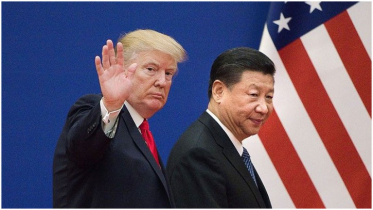US oil is stealing market share from OPEC+

Surging US oil production and shifting global oil flows amid geopolitical flare-ups have boosted American crude exports to record-high levels in recent months. Now US oil is encroaching on the key markets of the OPEC+ group, which has been restricting supply in an effort to boost oil prices.
From Europe to Asia, buyers are purchasing more US crude as sanctions against Russia and uncertainty over Venezuela’s sanctions relief renewal are making refiners anxious about importing Russian and Venezuelan crude. Europe has also turned to more US oil as shipments from Asia are now taking longer to deliver cargo. Due to the Houthi attacks on commercial shipping, tankers mostly avoid the Red Sea/Suez Canal route – the fastest shipping lane from Asia to Europe – and are heading to the Cape of Good Hope around Africa.
Record-high US exports
As US crude oil production defied forecasts of a significant slowdown in growth in 2023 and hit new highs, again, exports from America increased—to a record-high level since the U.S. ban on most crude oil exports was lifted in 2015.
US crude oil exports averaged an all-time high of 4.1 million barrels per day (bpd) last year, having jumped by 13%, or by 482,000 bpd, from the previous record set a year earlier, in 2022, data from the U.S. Energy Information Administration (EIA) showed last month. Except for 2021, U.S. crude oil exports have increased every year since the ban on most exports was lifted in 2015.
As U.S. oil output rose by 9% on the year to a record-high 12.9 million bpd, and as many American refineries are designed to use heavier and sour crude, the excess light sweet crude from the shale plays found more buyers abroad. As most U.S. crude production is light, sweet crude oil, it has created export incentives for market participants, the EIA noted.
At the same time, OPEC+ continues to withhold supply to restore “market stability,” or in other words, to prop up crude oil prices.
“US production is going up and OPEC and Russian production is going down — so the US, by definition, is going to have more market share,” Gary Ross, an oil consultant turned hedge fund manager at Black Gold Investors, told Bloomberg.
US boosts market share in Europe and India
Last year, Europe became the largest buyer of U.S. crude oil, after the Western sanctions on OPEC+ producer Russia over its invasion of Ukraine.
The inclusion of West Texas Intermediate (WTI) crude oil in Dated Brent pricing also spurred buying of the U.S. crude variety.
The WTI crude oil included in determining the Dated Brent price is delivered into Rotterdam, a large crude oil storage and trading hub in the Netherlands. As a result, the Netherlands received more U.S. crude oil exports than any other country in 2023, averaging 652,000 bpd, per EIA estimates.
So in total, U.S. crude oil exports to Europe averaged 1.8 million bpd last year, slightly more than U.S. exports to Asia and Oceania of 1.7 million bpd. American crude has replaced a large portion of Russian crude, which Europe imported before 2022.
After the Netherlands, the second-largest market for U.S. crude was China, with imports from the U.S. averaging 452,000 bpd, more than double 2022 volumes, EIA’s estimates showed.
China imported much more Russian oil last year, as it was the biggest buyer of Russia’s crude which had to find new markets after the Western markets are now closed for Moscow’s oil.
India also gorged on cheaper Russian crude in late 2022 and in most of 2023, but has slowed imports from Russia after the U.S. tightened the sanction enforcement at the end of last year. Earlier this year, the U.S. also slapped sanctions on Russia’s state tanker operator Sovcomflot, making Indian buyers anxious about potentially running afoul of the U.S. sanctions.
All Indian refiners are now reportedly refusing to take Russian crude transported on Sovcomflot vessels and are carefully checking the ownership chain of every tanker carrying Russian crude to make sure the vessels are not affiliated with Sovcomflot or other entities on the latest U.S. sanctions lists.
India is set to import in April its highest oil volumes from the United States in 11 months as the stricter enforcement of the U.S. sanctions against Russia are slowing Russian crude flows to the world’s third-largest crude importer. Most of the crude bought in March for April loadings is WTI Midland, which, although more expensive than some Middle Eastern crude, is comparable to Russia’s Sokol grade, whose flows to India have been the most affected by the tightened U.S. sanction enforcement.
Indian refiners are also said to have suspended purchases of crude from Venezuela as the U.S. sanctions waiver on Venezuela’s oil exports expires on April 18 and could lead to complications if not renewed.
India and Europe are looking to diversify their crude oil supply from OPEC+ producers – which include the biggest Middle Eastern exporters and Russia – and U.S. crude is positioned to step in.
.png)




